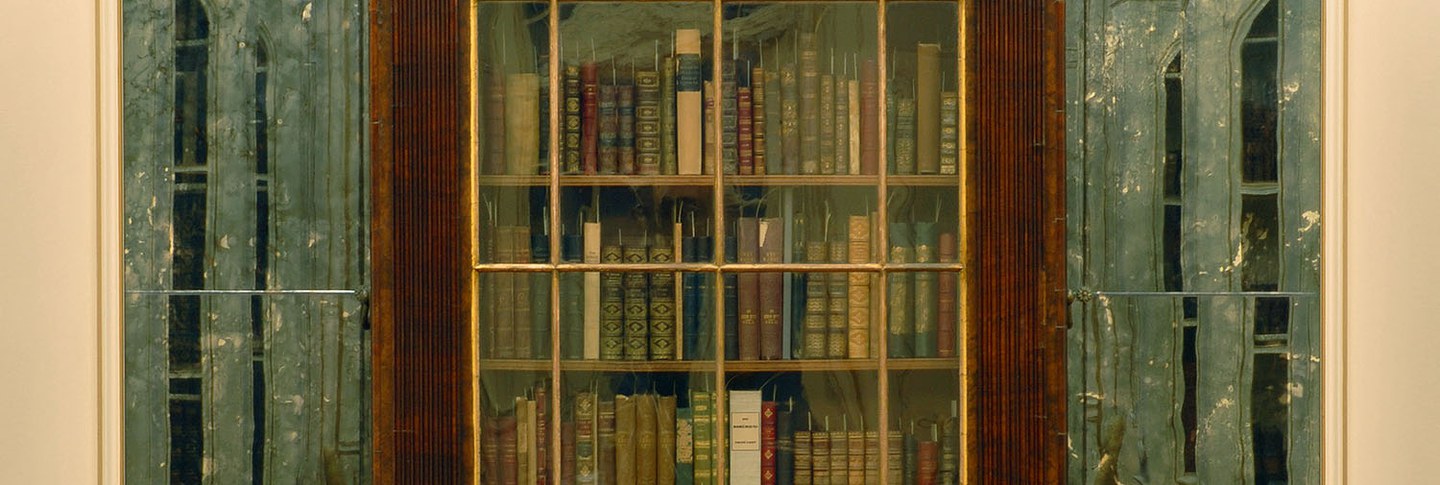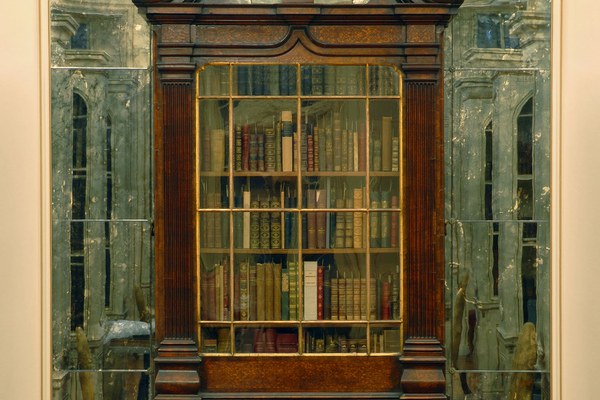Set at the far end of the Rare Book Reading Room, the Bennett Desk complements the Neoclassical grace and lightness of the reading room, but houses books that stand apart from the rest of the garden rare book collection. Although visitors can admire the design of the cabinetry, they rarely get to see the interior bookshelf and desk.
The desk was acquired in 1925 by Mildred and Robert Woods Bliss to decorate their home at Dumbarton Oaks. It was made in ca. 1720–30 by Samuel Bennett, who inscribed his name at the base of two inlaid pilasters on the inside of the bookshelf door: Samuel Bennett London Fecit. A signature on such a piece is an incredible rarity and almost certainly contributed to the Blisses’ decision to purchase the desk.
The upper bookcase contains rare works that were likely purchased by Mildred Bliss in her youth and are only seen by visitors through the cabinet’s glass door. The collection includes a first edition of Edmund Spenser’s Faerie Queene, a copy of the Iliad illustrated with pen-and-ink drawings by the sculptor Denys Puech, and a signed copy of Walt Whitman’s Leaves of Grass. A first edition of Uncle Tom’s Cabin is flanked by signed letters from Harriet Beecher Stowe, a receipt for a purchase of a slave boy named Ned, and, tucked inside its cover, autographs from actors in the original stage play of the book.
A limited edition of Oscar Wilde’s Sphinx, bound in parchment with a gold sphinx decoration, and a collection of Robert Louis Stevenson passages, specially bound as a gift and inscribed with “Mildred Barnes, Xmas 1905,” stand out for their exquisite covers, while the installment pamphlets of William Makepeace Thackeray’s The History of Pendennis are wonderful due to their lack of bindings.
The slanted cover folds down to become a writing desk and reveals drawers and cubbyholes, in which Mildred Bliss placed smaller curiosities, including a matchbox-sized book of fables and a calendar with a mirror inside. Items like these provide a glimpse into the collector’s personality. According to Special Projects and Reference Librarian Sarah Burke Cahalan, “if [the Blisses] see something charming, they buy it, even if they’re more officially in the market for a Byzantine antiquity.”

